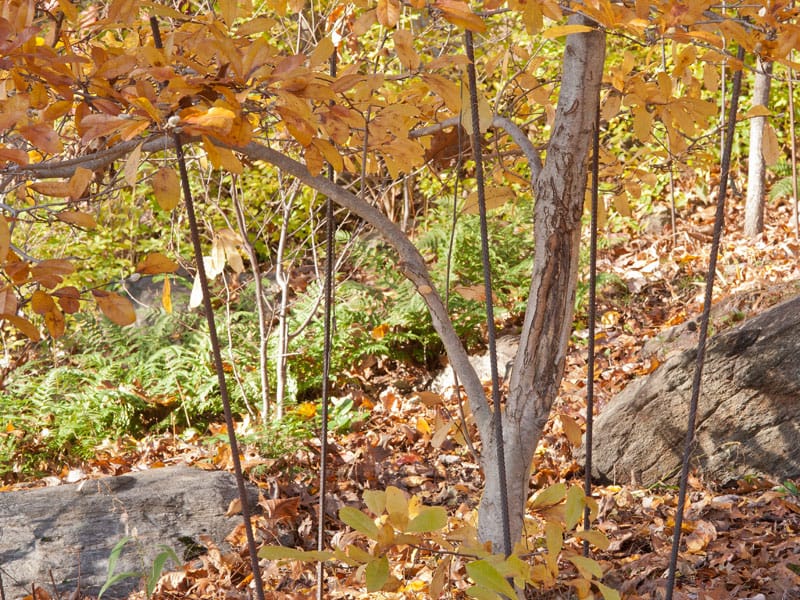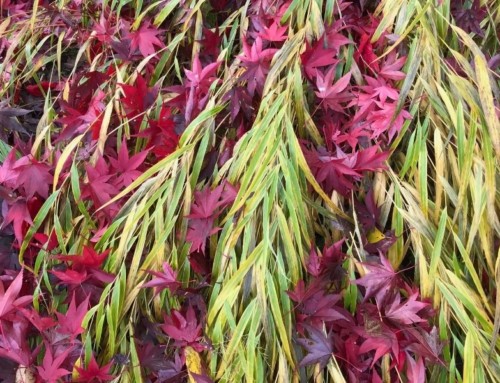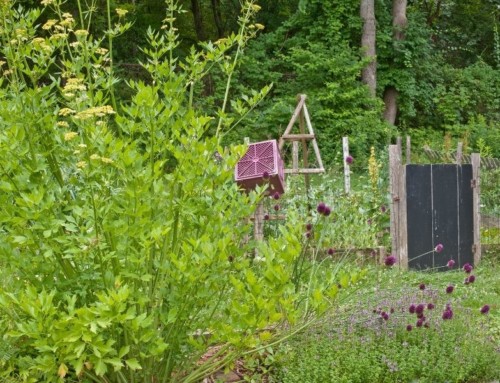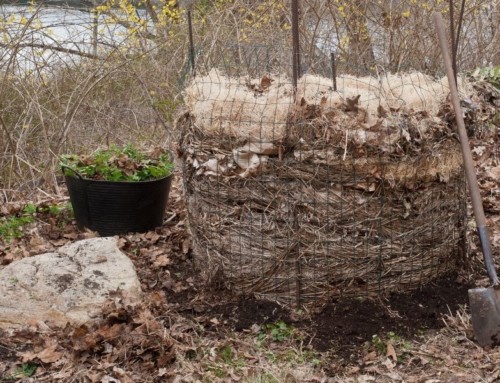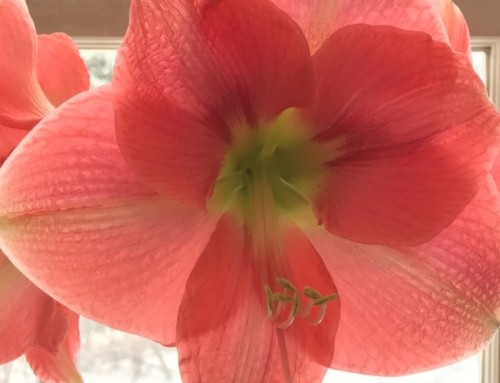I just say no to deer candy (roses, hostas, daylilies). No to tender, nutritious foliage fed by synthetic fertilizers. Yes to stinky herbs and deer repellant on new plantings. So what went wrong? My how time flies. Summer’s over, I didn’t spray consistently and now I’m paying the price.
Deer have established their winter territory. Unfortunately, this year I’m hosting a virile buck with three girlfriends. They’re chomping supposedly unpalatable Christmas ferns and plantain-leafed sedge (Carex plantaginea). I hope Plantskydd spray smells as repulsive to them as it does to me. It’s reportedly a very effective winter repellant.
The big problem this time of year lies at the intersection of bucks, trees and testosterone. Bucks rub their heads against tree trunks to mark mating territory with scent (from glands on the forehead) and scrape the velvety coating off now-mature (i.e. hard and sharp) antlers. As rutting season progresses, bucks build muscle strength (for fighting rivals) and work off testosterone overload by shredding saplings and slashing trees. A well-nourished buck can develop quite a rack and do a lot of damage, disfiguring or killing trees by girdling.
I live in the woods. No way can I wrap burlap, plastic coils, heavy-duty deer mesh or other (ugly, time-consuming, expensive) physical barriers around every blessed tree every fall. So when I see new damage, I jam 5-6’ lengths of ½” steel rebar into the ground surrounding trunks of choice trees. Deer aren’t quite so fond of crashing into metal. Rebar is heavy and time is short, so once I get them in without damaging roots, they stay in place. Rusted rebar blends right in, bark eventually grows over the damage if I catch it in time .
